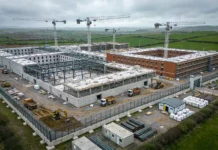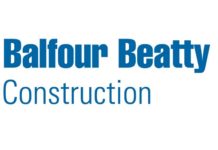The Fragmented Construction Paradigm
Construction’s value chain remains remarkably fragmented despite decades of industry evolution. Manufacturers, suppliers, contractors, and project owners operate with limited information sharing and coordination. This fragmentation reflects historical practices developed when communication technologies restricted real-time collaboration. Despite digital transformation enabling unprecedented information sharing, construction persists in patterns established when communication proved challenging.
This fragmentation generates substantial inefficiencies. Material delivery timing mismatches create site congestion and waste. Information asymmetries between designers and builders result in buildability problems discovered during construction rather than during design. Supply chain disruptions propagate through networks without visibility enabling proactive adaptation. The integrated construction value chain represents departure from this fragmented model toward coordinated ecosystems where transparency and collaboration drive performance improvement.
Historical Fragmentation and Its Costs
Information Isolation and Consequences
Construction participants traditionally operate with limited information about other value chain participants’ activities and constraints. Designers develop plans with incomplete understanding of material availability or construction methodology implications. Manufacturers produce equipment and materials without visibility into end-user requirements or project timelines. Contractors discover supply chain constraints only when requesting materials rather than during planning phases.
This information fragmentation creates cascading problems. When designers specify materials unavailable within project timelines, contractors must identify alternatives incurring delays or cost premiums. When manufacturers lack visibility into demand patterns, production planning suffers generating either excess inventory or stockouts. These inefficiencies accumulate throughout value chains producing ultimately substantial cost and schedule impacts.
Schedule coordination failures represent common fragmentation consequences. Material deliveries arrive before site preparation completion creating congestion, theft risk, and weather damage. Equipment procurement lacks visibility into actual project schedules resulting in idle expensive resources. Labor sequencing requires complex coordination when participants lack shared understanding of dependencies.
Contractual Structures Limiting Collaboration
Traditional construction contracts establish adversarial relationships between value chain participants. Design-bid-build procurement structures create information barriers between designers and builders. Fixed-price contracts incentivize contractors minimizing costs regardless of lifecycle impacts or supply chain partner profitability. This zero-sum contracting undermines collaborative relationships necessary for integrated value chain optimization.
Legal liability distributions through contract structures create risk-averse behaviors limiting innovation. When contractors bear substantial liability for design defects, they resist suggestions for design improvement fearing liability exposure. Suppliers withhold improvement proposals fearing loss of business from customers adopting alternative approaches. These contractual barriers prevent value creation opportunities.
Change order management through formal change processes creates friction around adaptation. Rather than smoothly adjusting plans responding to emerging information, change processes require formal documentation, negotiations, and approvals. Delays in implementing beneficial changes reduce realized improvements.
Digital Integration and Data Ecosystems
Real-Time Supply Chain Visibility
Advanced supply chain platforms aggregate information from manufacturers, distributors, and logistics providers creating visibility previously impossible. Project managers access real-time material availability, production status, and shipment tracking. This visibility enables proactive problem-solving before disruptions materialize.
IoT sensors tracking material locations throughout supply chains provide granular visibility. Radio-frequency identification and GPS tracking enable monitoring of high-value materials reducing theft risk. Environmental sensors document temperature and humidity conditions ensuring material preservation.
Demand forecasting algorithms process historical patterns and current project pipelines predicting material requirements. These forecasts enable manufacturers planning production with visibility into future demand. Inventory management becomes proactive rather than reactive based on actual demand signals.
Collaborative Digital Platforms
Cloud-based collaboration platforms enable seamless information sharing across value chain participants. Building Information Models accessible by designers, builders, and suppliers enable coordinated planning. Real-time updates flowing through platforms ensure all participants access current information.
Project management systems tracking activities, resources, and dependencies provide shared visibility into construction schedules. When suppliers understand contractor timelines and material requirements, coordination improves substantially. Contractors communicating actual versus planned progress enable downstream adaptation.
Quality management systems documenting material specifications, testing results, and performance data support trust-based relationships. When manufacturers transparently document product quality, customers gain confidence. Third-party verification and certification systems supplement manufacturer documentation.
Advanced Analytics and Optimization
Machine learning algorithms processing extensive supply chain data identify optimization opportunities. Algorithms analyzing historical patterns predict likely disruptions enabling proactive contingency planning. Recommendation engines suggest alternative materials, suppliers, or logistics routes when preferred options face constraints.
Demand pattern analysis reveals seasonal fluctuations, project type correlations, and geographic variations enabling sophisticated forecasting. Supply chain participants adjust strategies based on anticipated patterns rather than reacting to surprises. This proactive approach dramatically improves efficiency.
Network optimization algorithms identify logistics improvements reducing transportation costs and environmental impact. Route planning accounts for traffic patterns, fuel consumption, and vehicle capacity. Consolidation opportunities cluster related shipments reducing total movements.
Collaborative Business Models and Partnerships
Integrated Project Delivery and Relational Contracting
Progressive organizations employ integrated project delivery structures enabling collaborative planning without traditional adversarial contracting. Participants share project success and failure through transparent financial arrangements. This alignment motivates collective problem-solving over blame allocation.
Relational contracting establishing long-term partnerships between organizations enable relationship investments supporting superior collaboration. Rather than one-off transactions, ongoing relationships motivate behavior supporting partner interests recognizing future interactions depend on current conduct. Trust developing through years of successful collaboration dramatically improves problem-solving.
Strategic alliances between manufacturers, suppliers, and contractors create integrated capabilities supporting value creation. These partnerships enable developing customized solutions addressing specific project requirements. Long-term alliance structures enable investments in technology and training supporting competitive advantage.
Transparency and Risk Sharing
Open book accounting where organizations transparently share financial information enables fair risk distribution. Rather than protecting profit margins through information secrecy, participants collaboratively manage costs ensuring fair returns. This transparency supports trust-based relationships.
Shared savings models where productivity improvements and cost reductions distribute across participants align incentives. Rather than individual participants capturing full benefits from their improvements, shared arrangements motivate organizational commitment to collective efficiency.
Performance-based contracting compensating participants based on project outcomes rather than activities completed aligns incentives. When quality, schedule, and cost performance determine compensation, all participants focus on delivering superior results.
Supply Chain Resilience and Adaptability
Diversified Sourcing and Redundancy
Integrated value chains enable identifying and rapidly implementing sourcing alternatives when disruptions affect primary suppliers. When supply chains include multiple capable suppliers, switching proves feasible without schedule impacts. Digital platforms enabling rapid supplier search facilitate this adaptability.
Strategic inventory positioning anticipates disruptions enabling rapid response. Rather than maintaining excess inventory throughout supply chains, intelligent positioning creates buffers where disruption probability combines with consequence severity. This risk-based inventory approach balances carrying costs with disruption protection.
Supplier relationship diversification prevents single-supplier dependence creating vulnerability. Cultivating relationships with backup suppliers enables rapid engagement when primary suppliers face capacity constraints. Regular performance testing of backup suppliers ensures readiness when needed.
Scenario Planning and Contingency Strategies
Supply chain stress testing identifying critical vulnerabilities enables proactive mitigation. When integrated platforms simulate disruption scenarios, organizations identify likely breakpoints and develop contingencies. This proactive approach proves far more effective than reactive crisis response.
Flexible contract terms enabling adjustment to changing circumstances support resilience. Rather than rigid specifications requiring change order processes for adaptation, flexible arrangements enable smooth adjustments. Mutual understanding about reasonable flexibility ranges establishes shared expectations.
Supplier financial stability monitoring identifies potential bankruptcies before they manifest. When customer organizations support supplier development addressing financial challenges, supply chain continuity improves. This partnership approach prevents disruptions through preventive action.
Environmental and Sustainability Advantages
Circular Economy Integration
Integrated value chains enable implementing circular economy principles systematically. Material recovery and reuse networks connect waste sources with remanufacturing operations. Integrated platforms track material flows enabling recovery routing.
Product-as-service models where manufacturers retain ownership and responsibility for products throughout lifespans align environmental incentives. Manufacturers focusing on extended useful life and material recovery design accordingly. These models eliminate disposal externalization supporting circular principles.
Digital material passports tracking component composition and recovery procedures throughout products’ lifespans support end-of-life optimization. When demolition or disassembly occurs, accessible documentation enables efficient material recovery.
Collective Environmental Impact
Collaborative sustainability initiatives across value chains achieve greater environmental impact than individual participant efforts. Coordinated emissions reduction strategies optimizing collectively rather than independently deliver superior results. Shared measurement systems enable tracking collective progress.
Supply chain transparency supporting environmental claims verification builds stakeholder confidence. When materials tracked from source to application verify sustainable practices, customers gain assurance. Third-party verification supplements internal claims.
Challenges and Barriers to Integration
Successful integrated construction value chain development faces substantial obstacles. Data security concerns limit information sharing particularly when competitive sensitivity involves. Building trust sufficient for transparency requires cultural change across industries historically competitive.
Legacy systems and organizational structures designed for fragmentation require substantial investment to overcome. Organizations evolved through decades operating independently struggle adopting collaborative approaches requiring behavior change. Change management proves challenging at scale.
Standardization across diverse organizations with varying systems, practices, and capabilities requires substantial effort. Common data formats, communication protocols, and performance metrics must be established and adopted. This standardization progress continues gradually with industry association leadership.
Future Evolution and Opportunity
The integrated construction value chain represents profound opportunity for industry transformation. Organizations embracing collaboration and digital integration establish competitive advantages through superior efficiency, resilience, and sustainability. As regulatory pressure, investor scrutiny, and market demand increasingly reward integrated approaches, industry motivation for transformation accelerates.
Future construction will likely involve substantially more integrated value chains with transparent data sharing, collaborative planning, and aligned incentives. Early adopters establishing partnership ecosystems and technological infrastructure position themselves advantageously as industry standards evolve. The construction industry’s future growth and sustainability depend on value chain integration becoming industry standard rather than innovative differentiation.





























